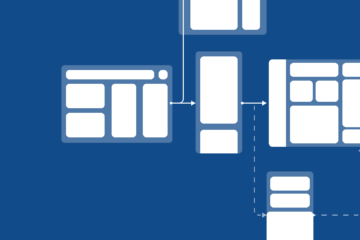Understanding Usability Testing
If I were to ask you to go to an airline website and book me a plane ticket to Hawaii, would you do it? If yes, you may be my new best friend! Joking aside, how would you purchase my ticket? Once on the website, what steps would you take to book a flight? First, you might orient yourself to the airline’s homepage, locate the button or menu section that allows you to enter your departing airport (which, by the way, is Tampa, FL in case you are my new best friend) and input the destination airport. Next, you would select the flight dates – I am free in January – and then press ‘Submit.’ The resulting page would display a list of available flights to choose from. Look how easy it was to book me a flight! This ease of use is primarily the result of thorough usability testing.
Usability testing is a methodical approach for evaluating how easily and effectively users can interact with a product to complete tasks and comprehend the presented information or data. The process involves observing test users navigate through a series of tasks, such as making selections on a dashboard visualization or finding that flight on a new website, and taking note of their feedback and experience using the proposed solution. These scripted tasks help uncover potential usability issues, gauge users’ understanding of the product, and highlight areas where product refinement is necessary.
Why Does it Matter?
I know what you’re thinking: “This is just another step in the process; why must I do it?” While the answer may vary depending on the product you are creating, for data visualizations, these are some of our whys:
- User-Centric Design: Data visualizations should address users’ needs and cognitive abilities. Usability testing ensures that the design meets user expectations, making complex data more accessible and understandable.
- Identifying Pain Points: Users may struggle to interpret certain visual elements, understand relationships between data points, or navigate through interactive features. Usability testing uncovers these pain points, allowing developers to address them early.
- Optimizing User Flow: By observing how users interact with visualizations, developers can optimize the flow of information. Changes may include improving the sequence of data presentation, clarity of labels, and effectiveness of interactivity.
- Enhancing Engagement: Engaging visualizations captivate users and encourage exploration. Usability testing helps us to learn how engaging the visualizations are and provides insights into enhancing user engagement through design improvements.
While it might seem like just another step in the process, usability testing is the secret sauce that transforms data visualizations from prototypes to powerful tools. So, let’s embrace usability testing—it’s not just a ‘why’ but a ‘why not?’
The Recipe for Successful Usability Testing
While I mentioned it as a secret sauce, I apologize for any disappointment—it doesn’t involve food. Even without culinary ingredients, these are some of the crucial steps you should take when setting up and conducting a usability testing session:
- Define Testing Criteria: Determine what aspects of the data visualization you want to test (e.g., navigation, data interpretation, overall understanding of the presented topics).
- Recruit Test Participants: Select participants who represent the visualization’s target audience. Potential real users will provide the most relevant and actionable feedback.
- Develop Test Scenarios: Create realistic tasks that users would perform with the visualization. Tasks should cover a range of interactions and functionalities.
- Conduct Testing Sessions: Observe participants as they complete tasks. Encourage them to think aloud so testers can accurately understand their thought process and any challenges they encounter.
- Collect Feedback: Capture qualitative feedback (user comments and observations) and quantitative data (task completion rates, time taken).
- Analyze Results: Identify common pain points and patterns from the testing sessions. Prioritize changes based on the severity and frequency of issues.
- Iterate and Refine: Implement design/development improvements based on the findings.
In Summary
While the lack of actual food disappoints, the recipe for successful usability testing remains rich in essential ingredients. Beyond the initial setup, consider ongoing refinement as part of your product development journey. Just as a chef tweaks a dish based on taste tests, iterate and refine your data visualizations based on the insights gained from usability testing.

Usability testing bridges the gap between data complexity and user comprehension, ensuring that insights are not just visible but accessible and actionable. In a world where data is the key to effective decision-making across industries, the strategic use of usability testing will be crucial in unlocking the full potential of your visualizations.
Remember, the goal isn’t just to provide a delightful experience but to keep diners – your users – returning for more!
